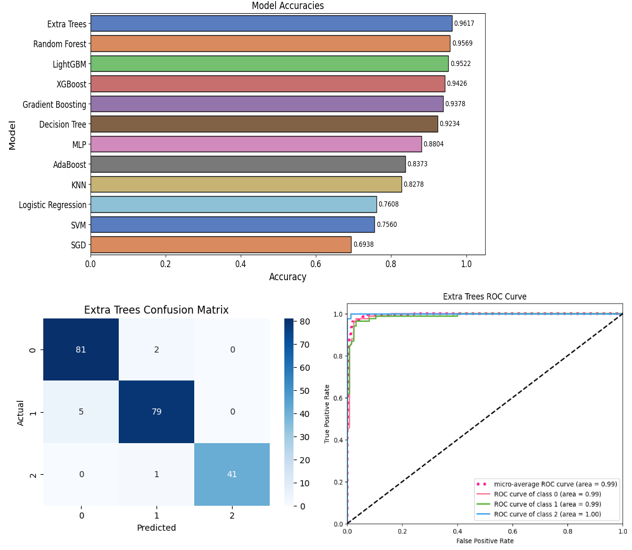A Comparative Study of Machine Learning Models for Soil Fertility Prediction Based on Soil Properties
Main Article Content
Abstract
Soil fertility plays an important role in agricultural productivity, accurately predicting soil fertility based on elemental soil properties is essential for optimizing resource management and promoting sustainable farming practices. This study investigates the use of machine learning models to predict soil fertility from a dataset containing various elemental soil properties and several trace elements. The soil fertility is categorized into three classes: "Less Fertile," "Fertile," and "Highly Fertile." We evaluate the performance of each model using key metrics such as accuracy, precision, recall, and F1 score. Among the models tested, the Extra Trees classifier achieved the highest accuracy of 96.17%, followed by Random Forest and LightGBM with similar accuracies of 95.69% and 95.22% respectively. Our results indicate that ensemble models such as Extra Trees and Random Forest perform significantly better than other algorithms like SVM and SGD. These findings demonstrate the potential of machine learning to revolutionize soil fertility assessment, providing a scalable and effective tool for precision agriculture and sustainable soil management.
Downloads
Article Details

This work is licensed under a Creative Commons Attribution 4.0 International License.





